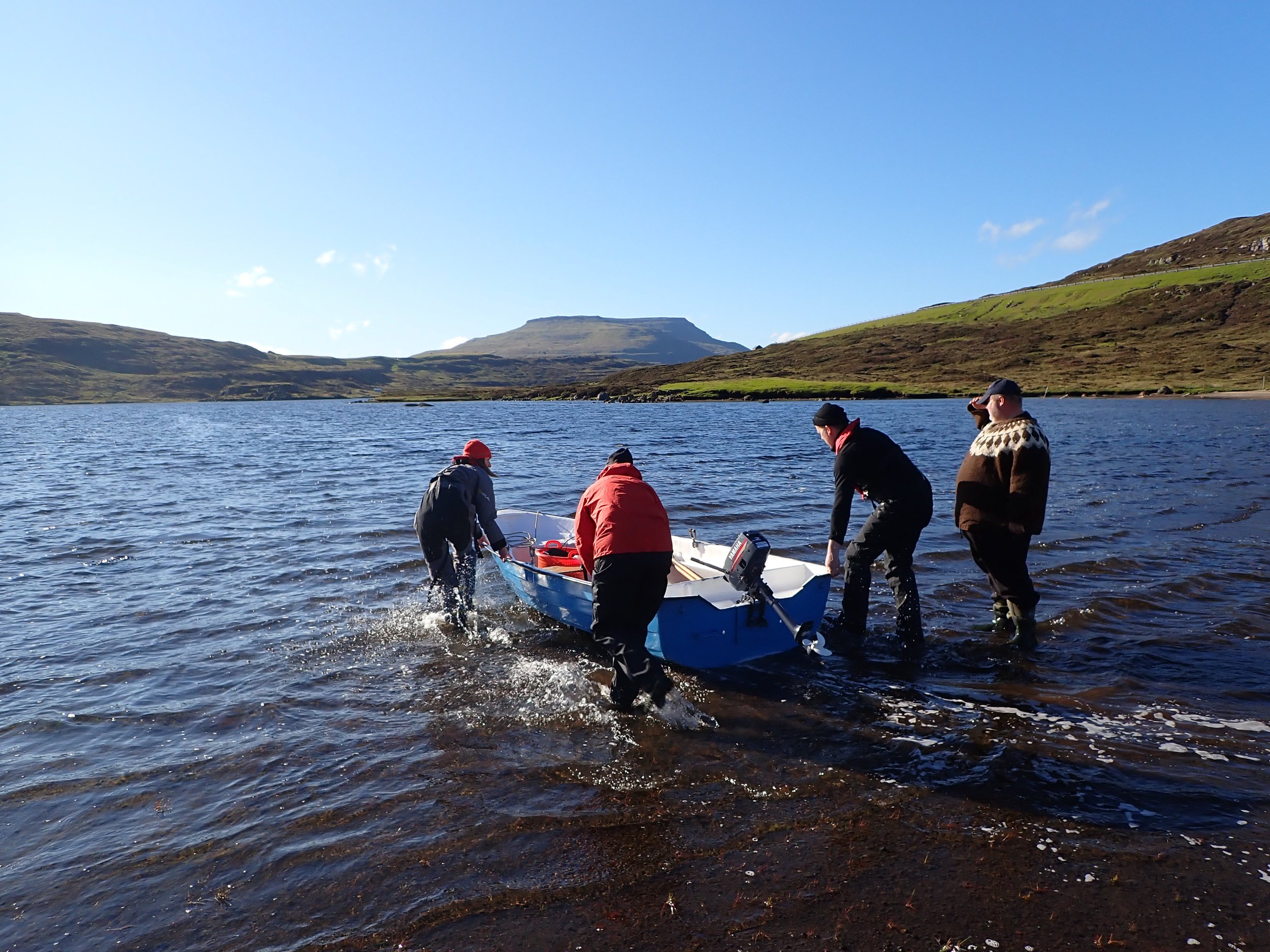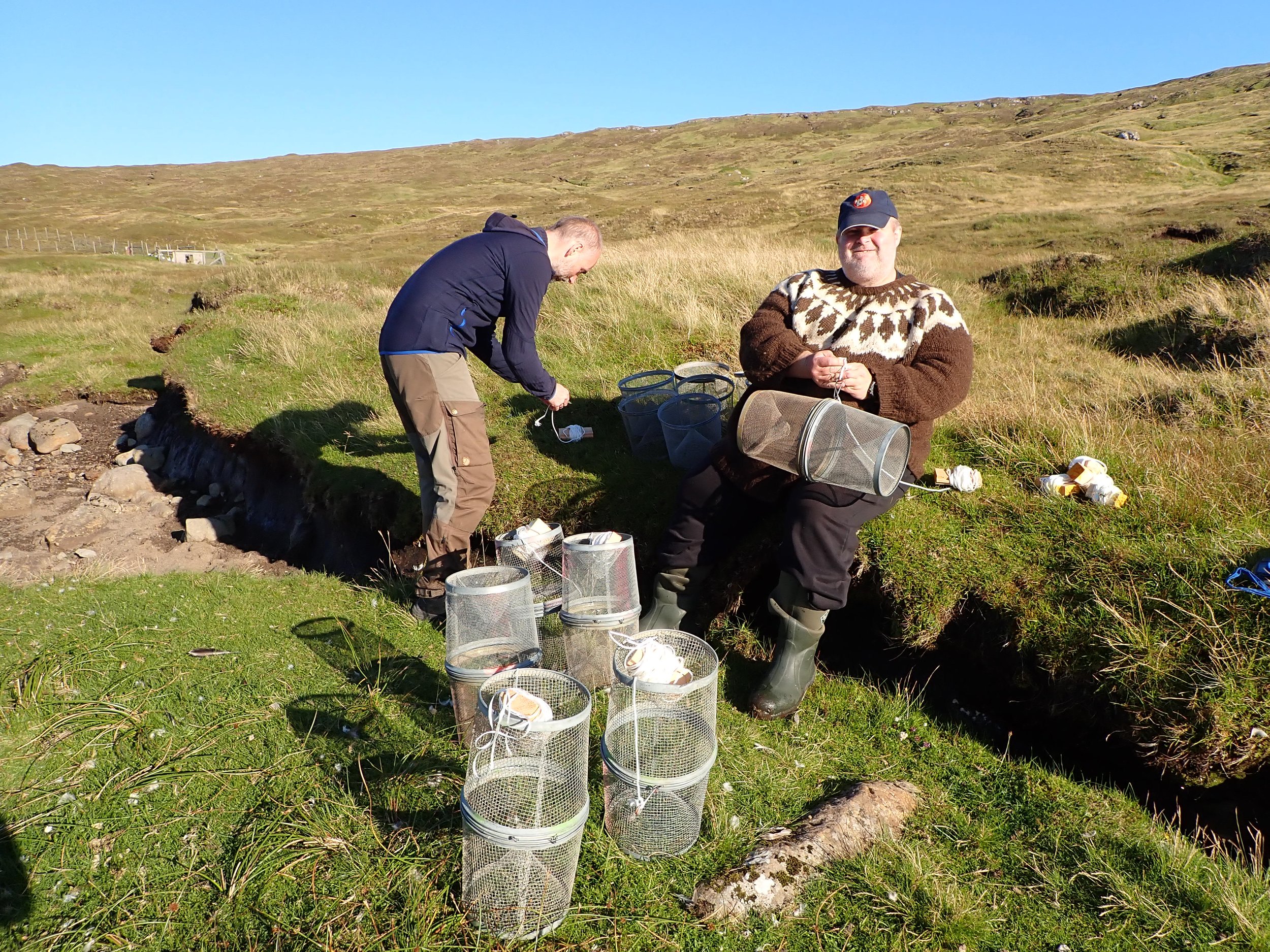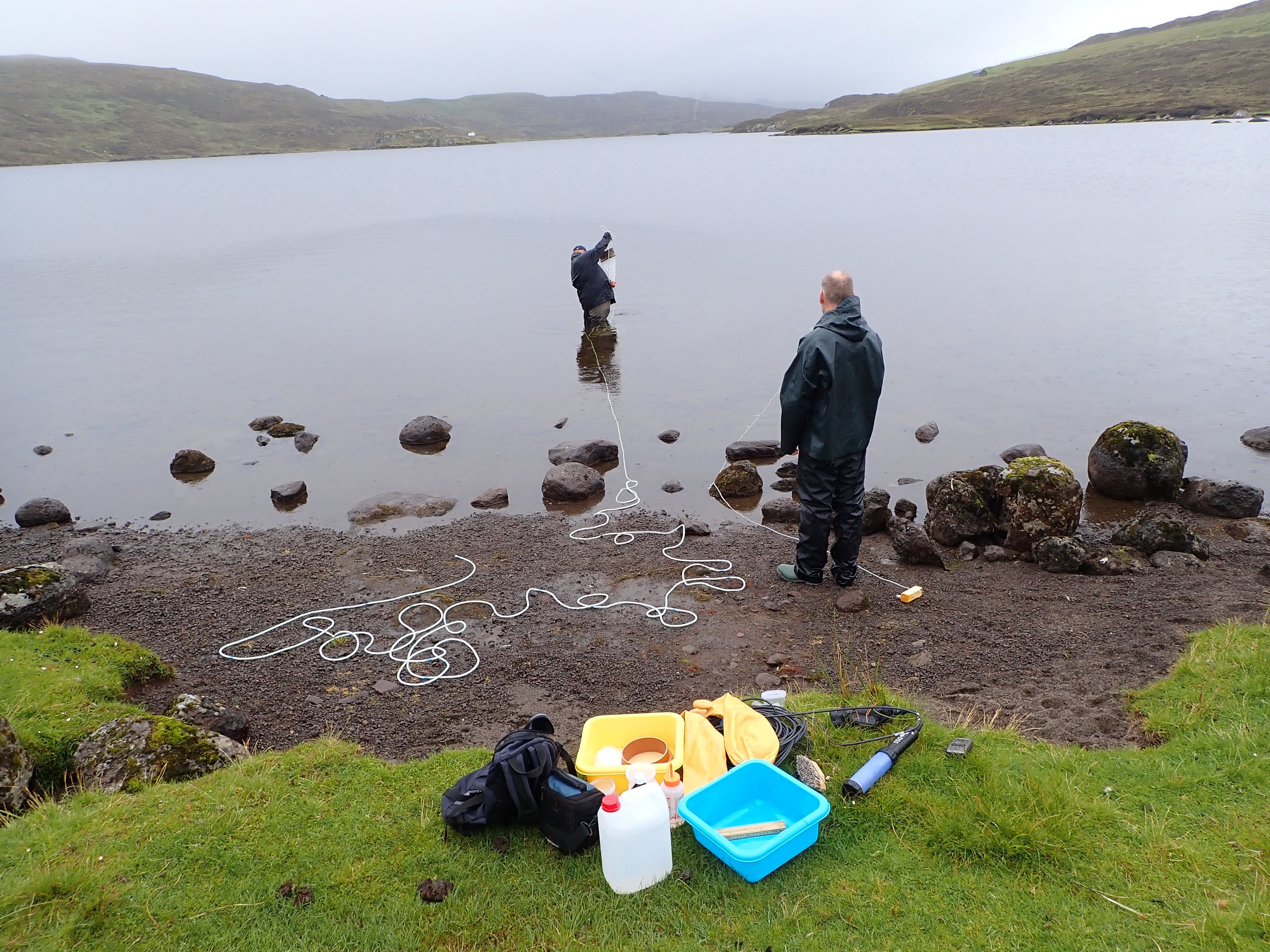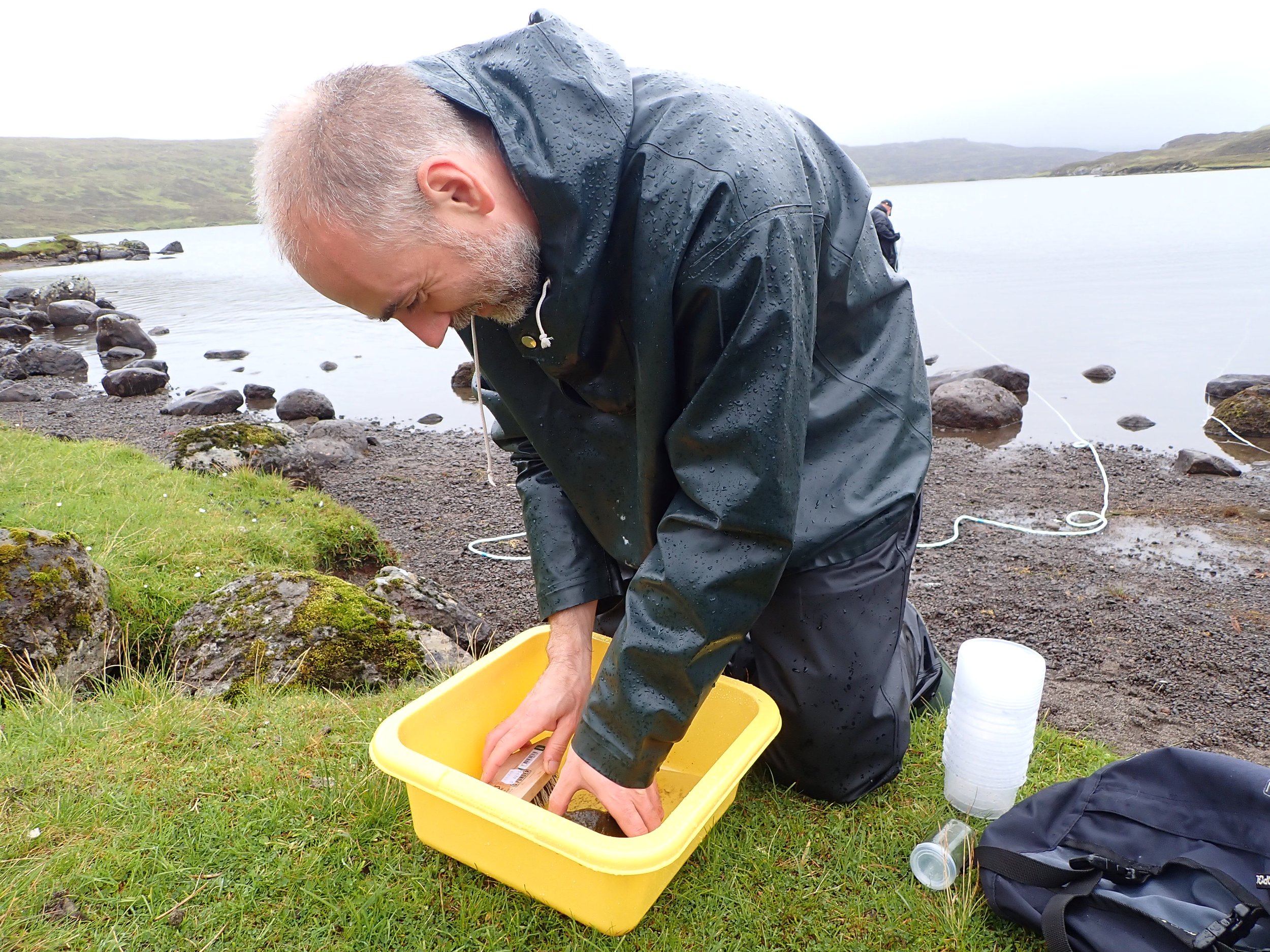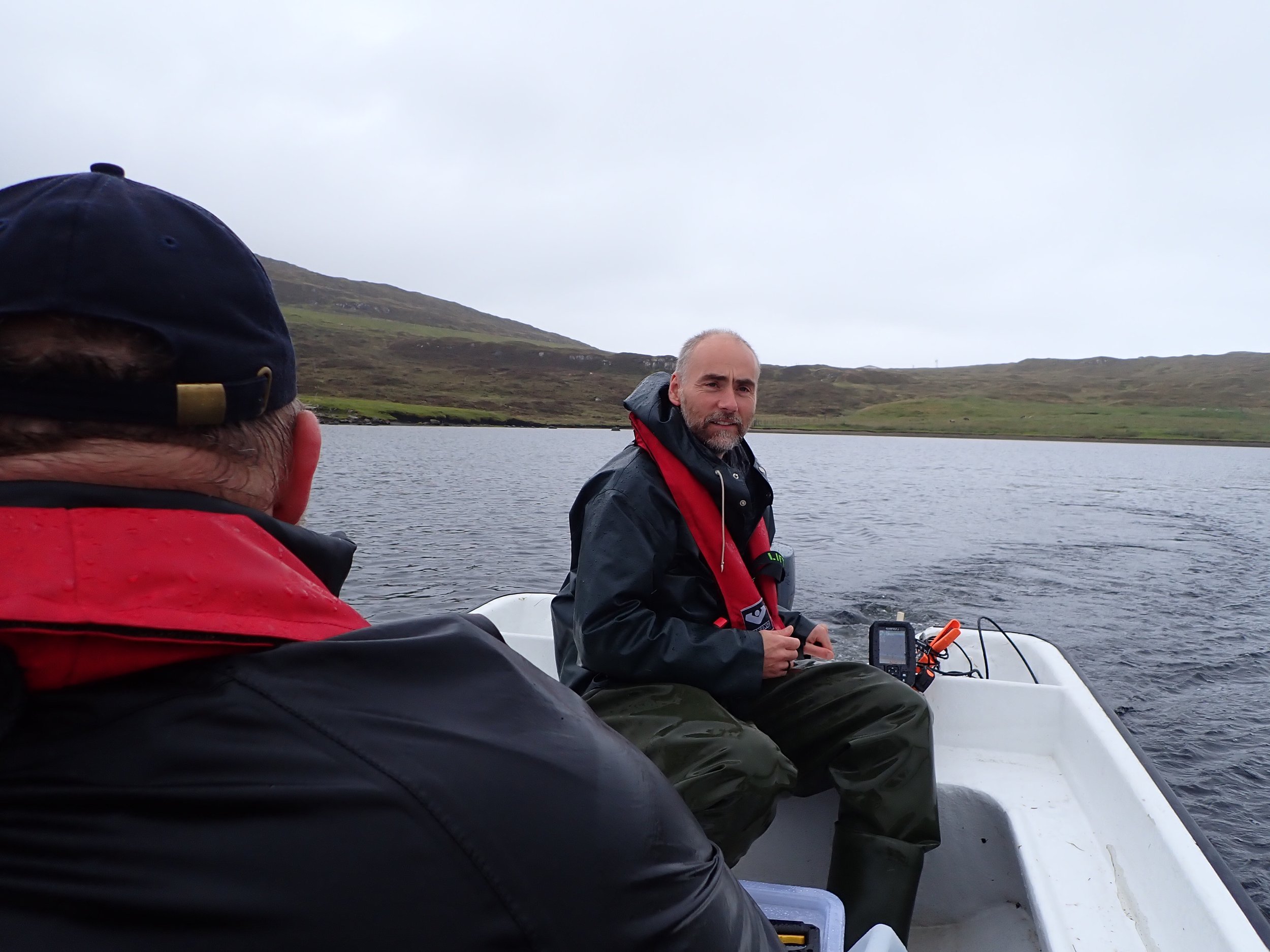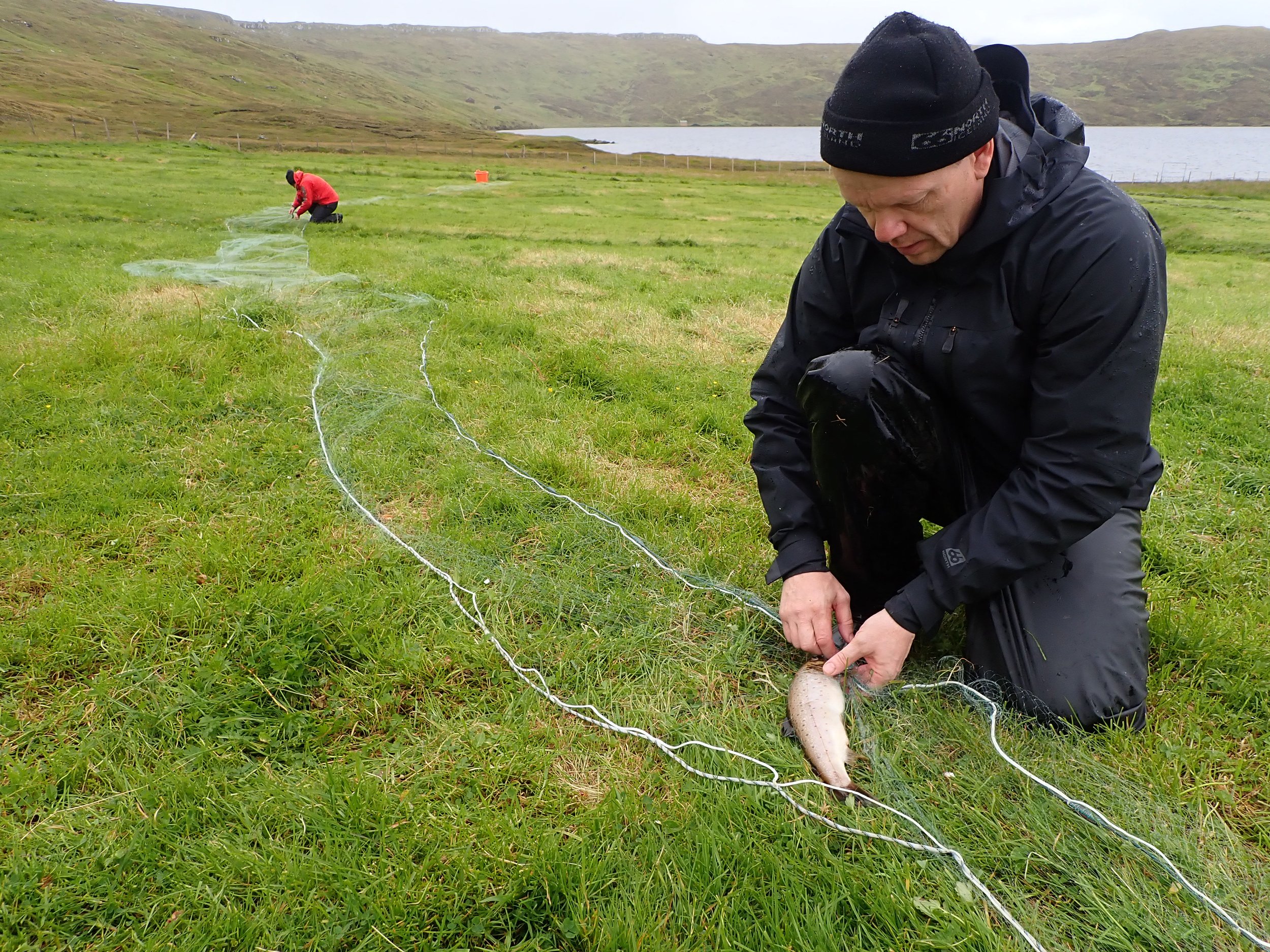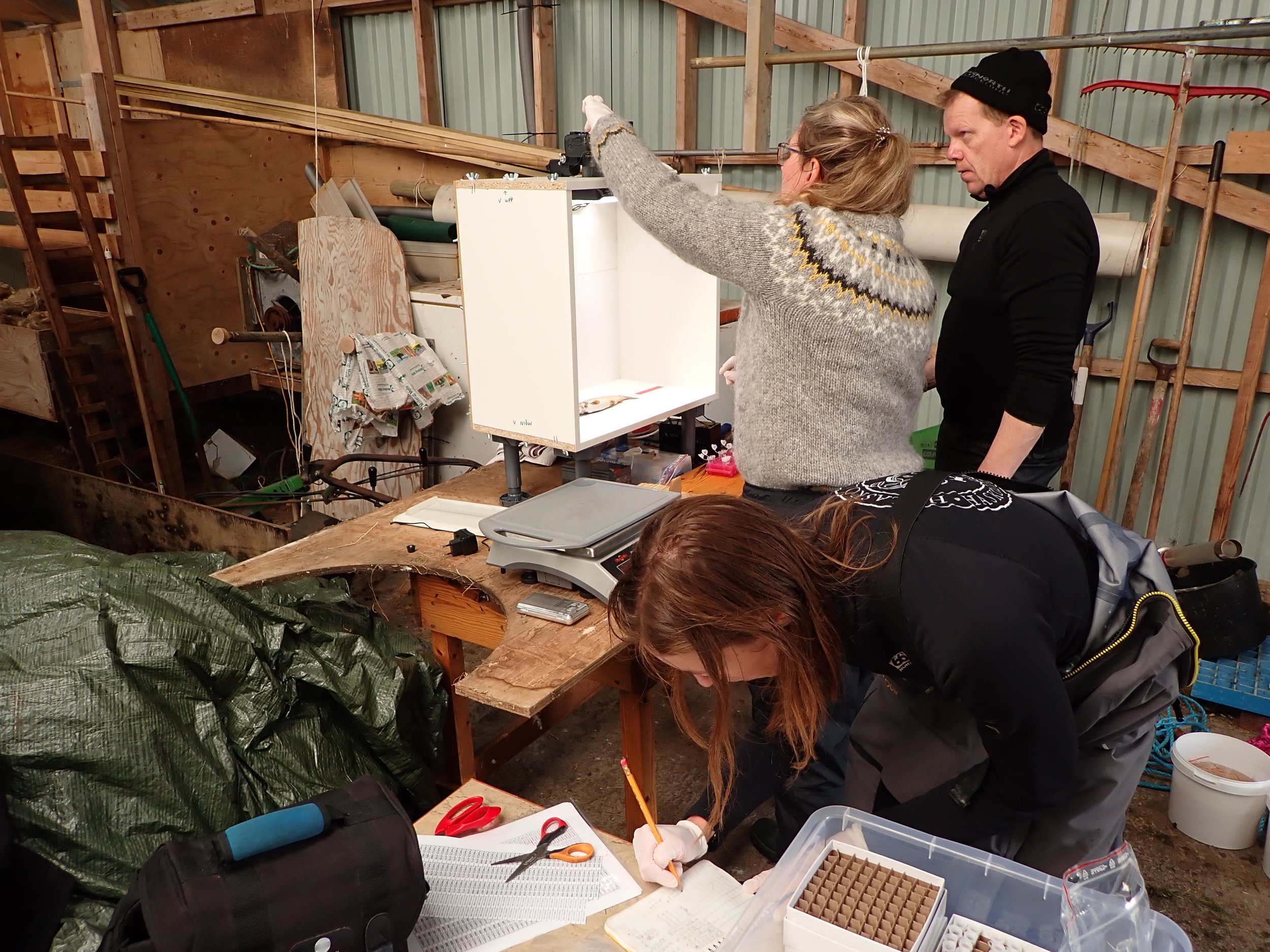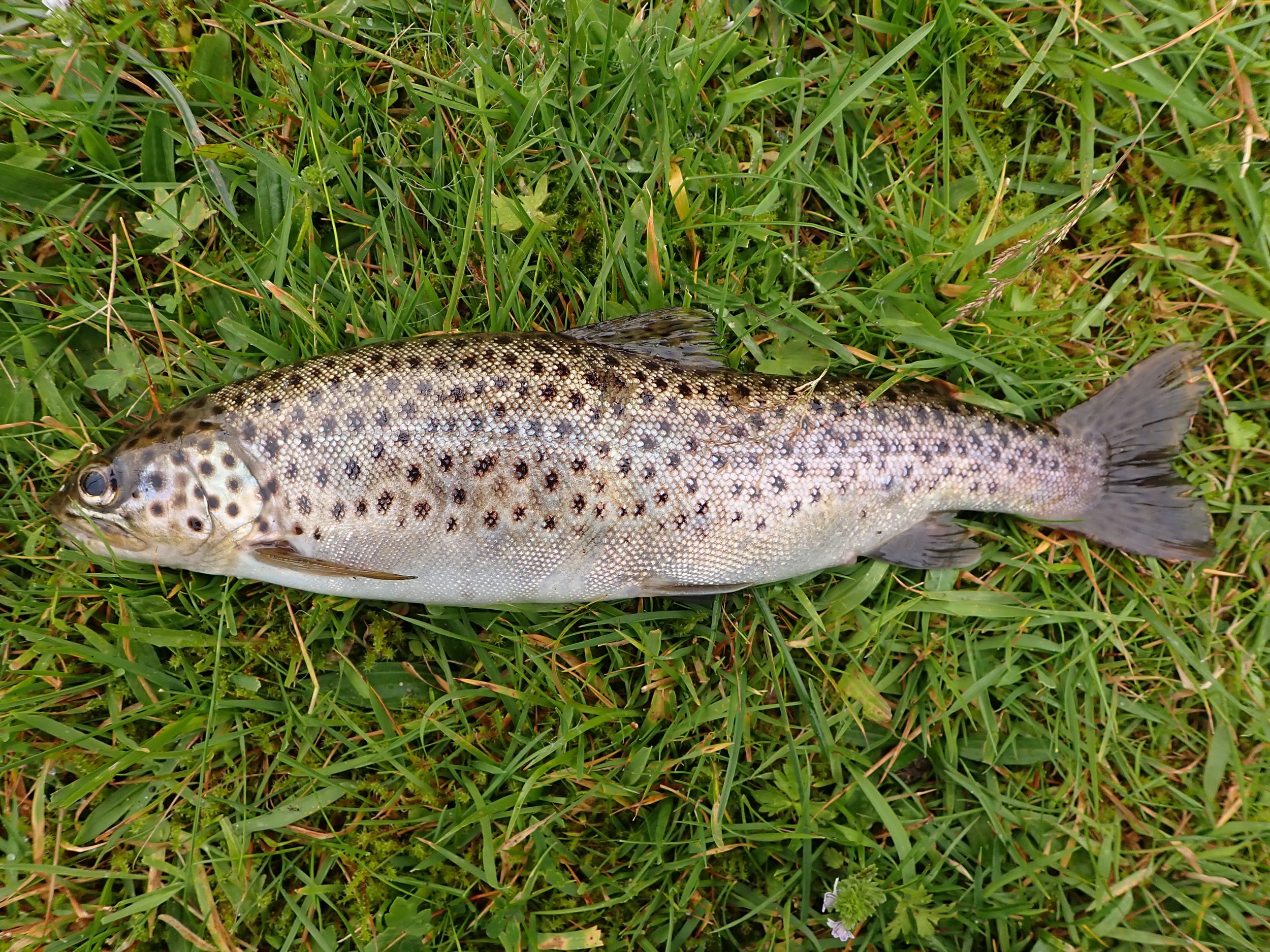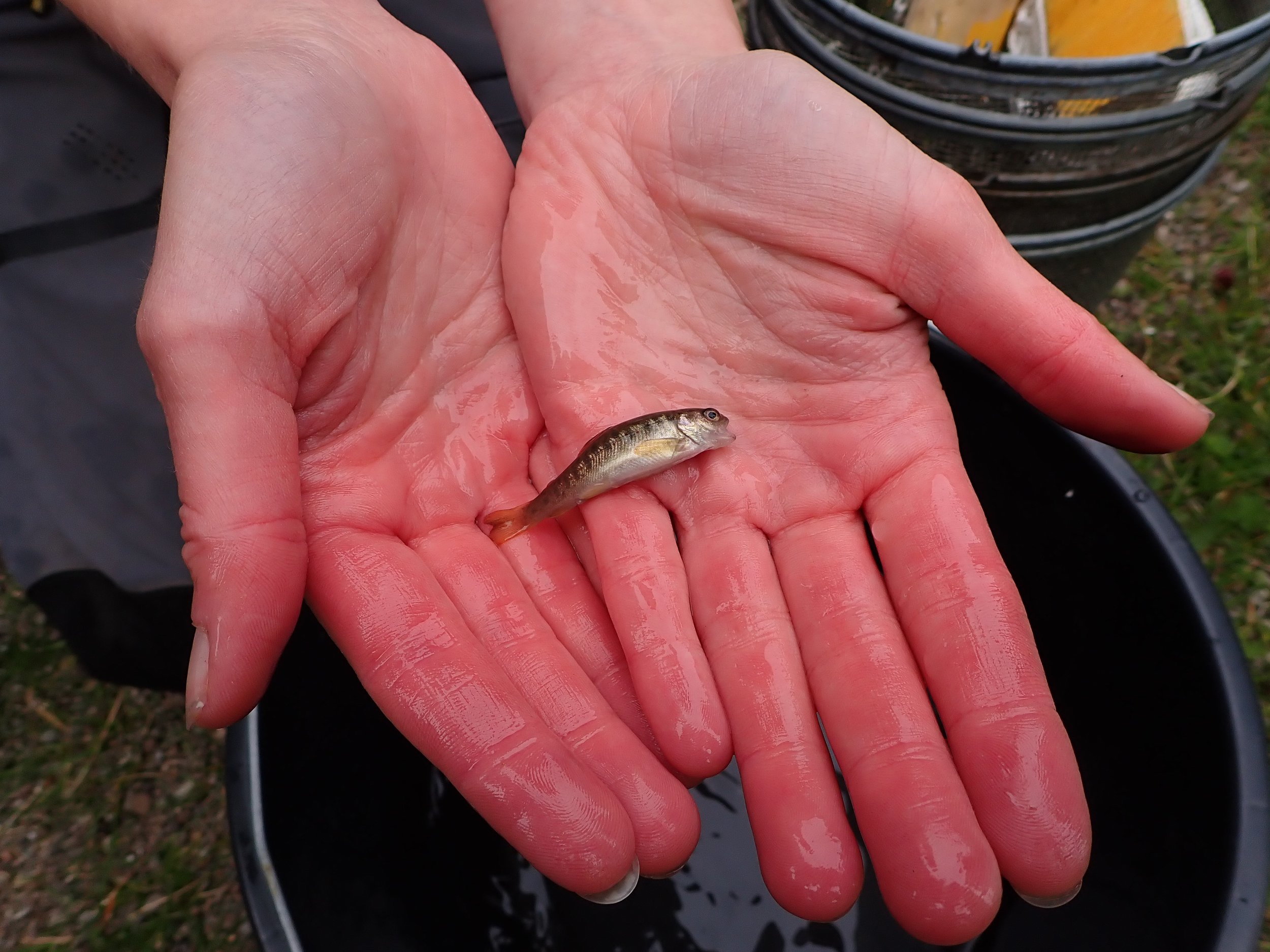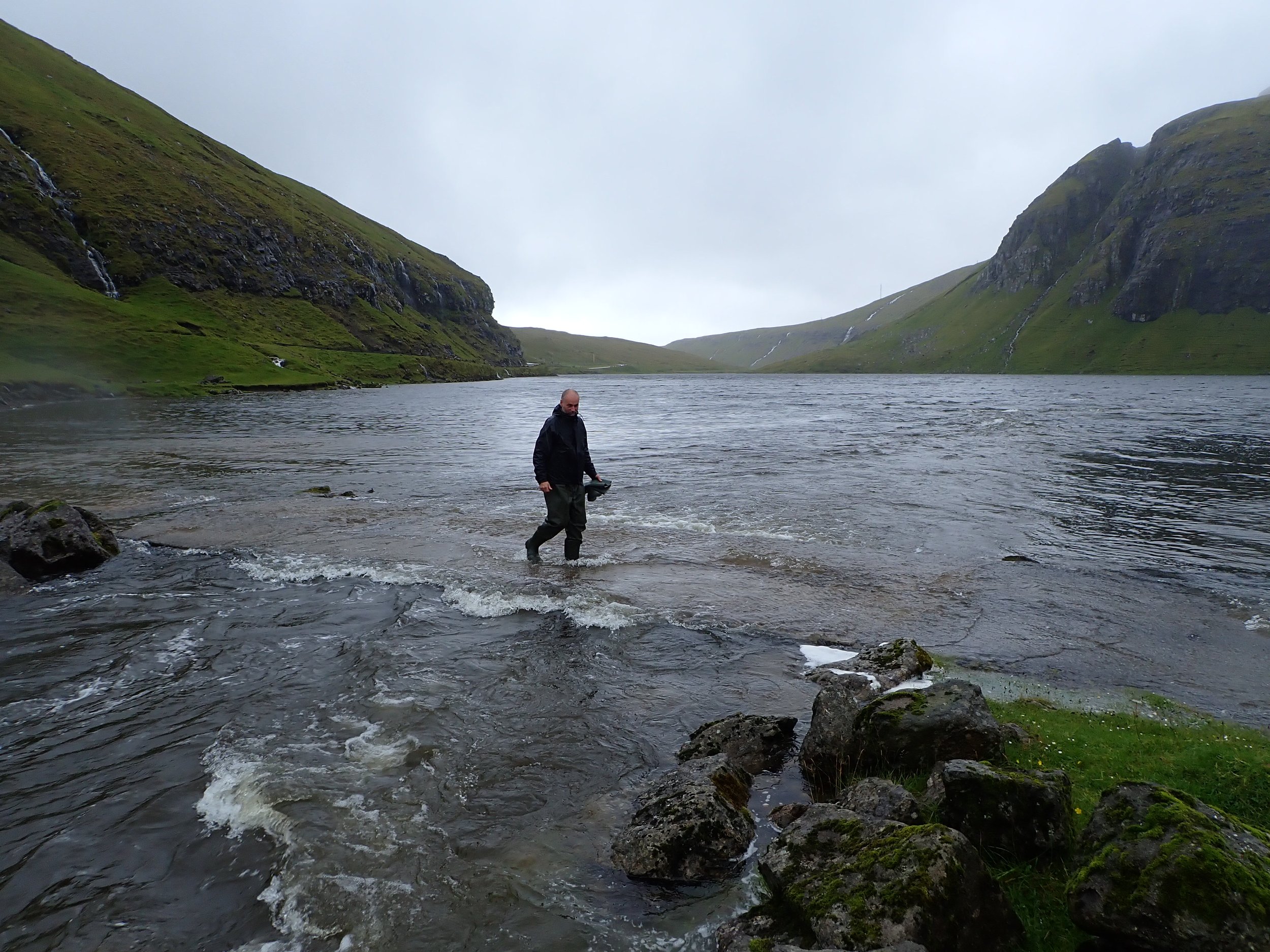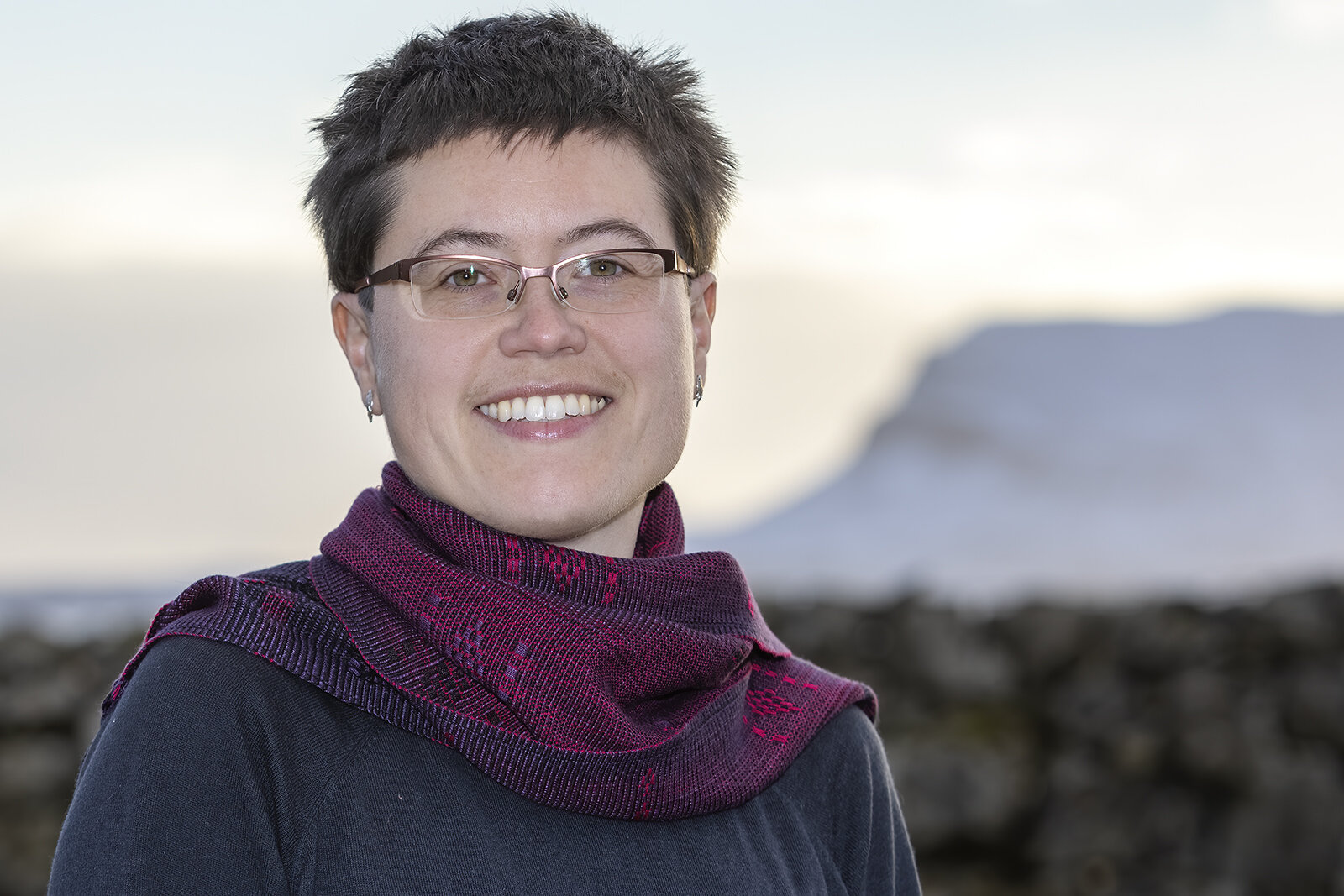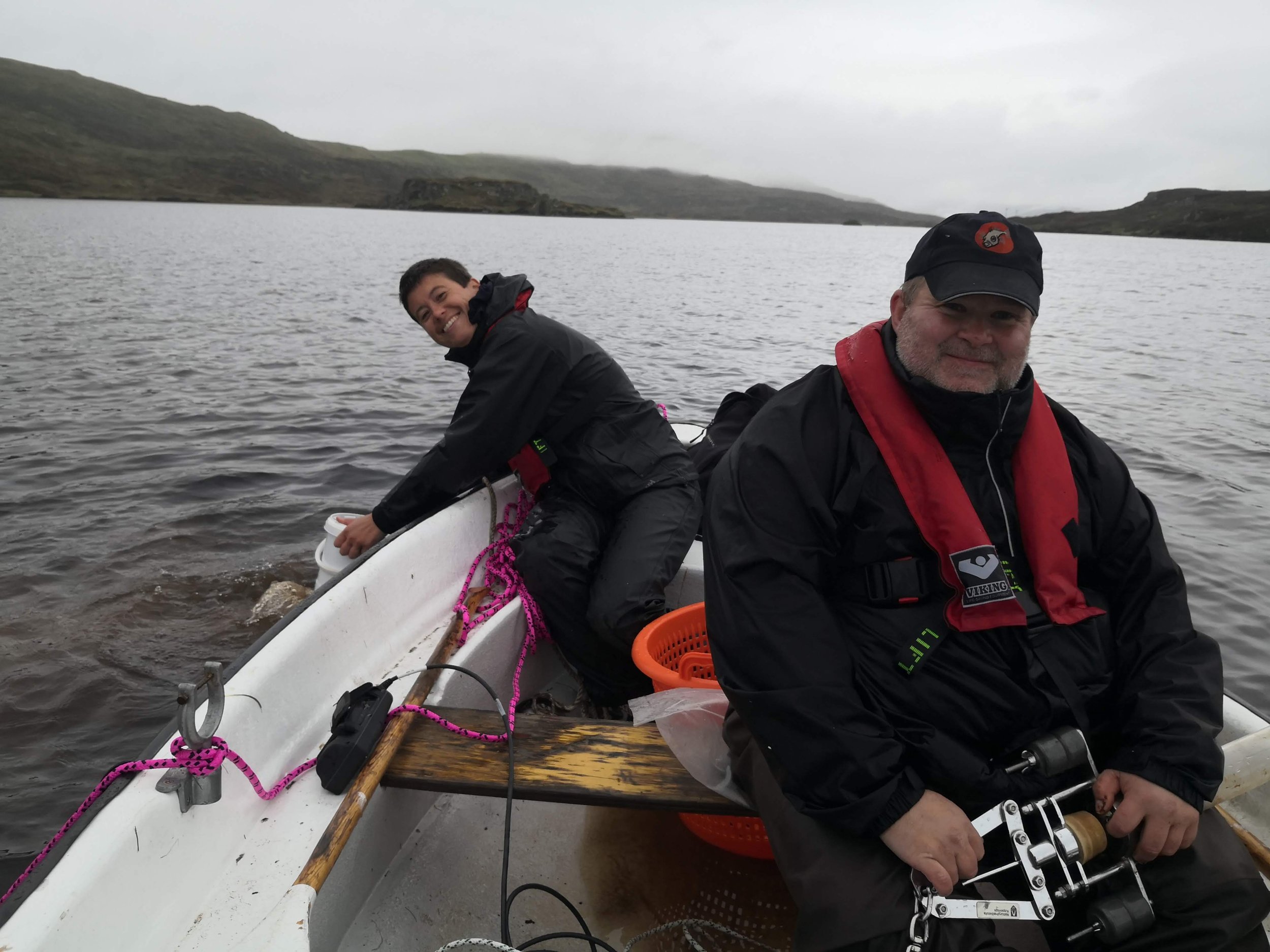
FishFAR
Research project on temporal changes in feeding ecology and life histories of Arctic charr and Brown trout in Faroese lakes
The project aims to identify effects of climate change on community structure and trophic ecology of fishes in small subarctic Faroese lakes. We compare feeding resources, fish diet and fish morphology across the three small subarctic lakes Leynavatn, Saksunarvatn and Toftavatn. These lakes represent contrasting combination of fish species. By studying what fishes eat, where they are found, and if they compete, we can identify how they can affect the whole lake ecosystem. We compare the contemporary data to those obtained in summer 2000 (NORLAKE project), allowing an estimation of contemporary changes in salmonid species in the context of warming.
The project will increase our spatial and temporal understanding of biodiversity of freshwater fishes in small subarctic lakes in the Faroes. This is of critical importance for successful conservation of biodiversity under the current climate and biodiversity crises.
Fieldwork
Fieldwork for this project was conducted 5.8. - 11.8.2022. We worked from boat and on land.
Invertebrate samples were taken both in the open water and at the shore line at each of the three lakes (Toftavatn, Saksunarvatn, and Leynarvatn). In addition, multi-mesh gill nets were layed overnight for a duration of ca. 12 h. However, at Toftavatn and Saksunarvatn it was necessary to lay them for some additional time in order to get enough fish.
The fish were photographed, measured, and dissected on site. In total around 4000 measurements and samples were taken.
Below are the numbers of Brown trout and Arctic charr which were taken in 2000 and in 2022.
The Team
The project is led by Dr. Camille Leblanc (Hólar University) and Dr. Agnes-Katharina Kreiling (Tjóðsavnið).
Further participants are:
Prof. Dr. Bjarni K. Kristjánsson (Hólar University)
Prof. Dr. Kirsten S. Christoffersen (University of Copenhagen)
Leivur Janus Hansen (Tjóðsavnið)
Dr. Hilmar J. Malmquist (Icelandic Museum of Natural History)
Dr. Ragnhildur Guðmundsdóttir (Icelandic Museum of Natural History)
The project is funded by the Research Council Faroe Islands (Granskingarráðið).
The project would not be possible without the help of: Náttúrufræðistofa Kópavogs, Havstovan, Biofar, Føroya Sílaveiðufelag, Nes Kommuna, Jóhan Jógvanson, Poul Adrian í Homrum and others.
Links:
Tjóðsavnið received funding from the Research Council Faroe Islands (May 2022)
Á granskingarferð í føroyskum vøtnum (August 2022)
Poster at the Annual Meeting of the Icelandic Ecological Society (March 2023)
